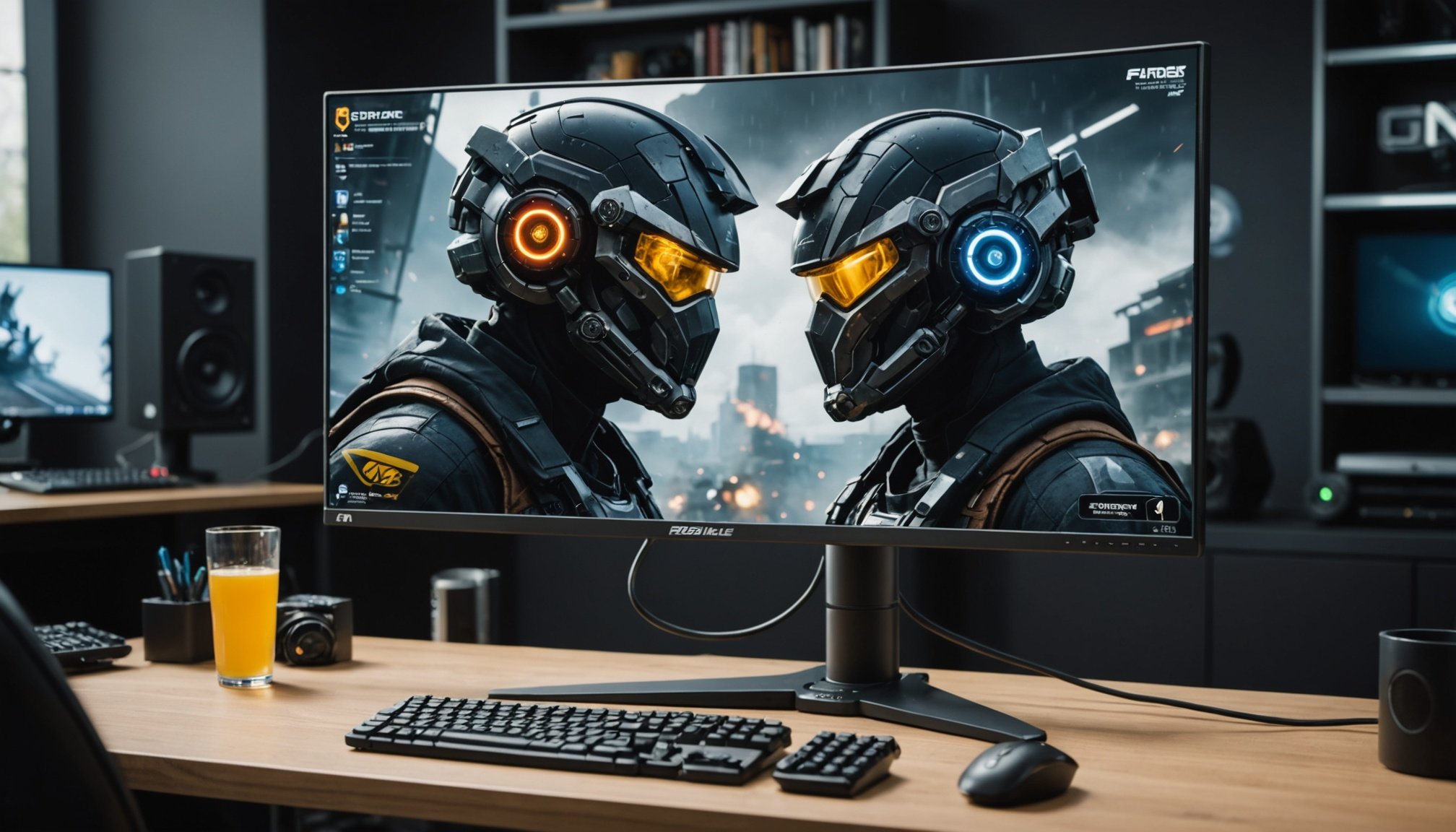Understanding Refresh Rates
In the world of gaming monitors, the term “refresh rate” is crucial. Measured in Hertz (Hz), it refers to how often a display updates the image per second. A higher refresh rate provides a smoother visual experience. For example, a 60Hz monitor updates 60 times per second, whereas a 240Hz monitor does so 240 times.
Importance for Competitive Gaming
When it comes to competitive gaming, refresh rate is vital. It can be the difference between a win and a loss. A higher refresh rate reduces screen tearing and lag, allowing for quicker response times. Gamers often choose monitors with 120Hz, 144Hz, or even 240Hz to ensure top-notch performance.
In parallel : Exploring the impact of motherboard chipset on system performance and compatibility: a comprehensive guide
Differentiating Refresh Rates in Monitors
Comparing 60Hz, 120Hz, 144Hz, and 240Hz monitors, gamers can notice significant differences. A 60Hz monitor might suffice for casual gaming, but a 120Hz or 144Hz monitor is preferable for those seeking competitive edges. On the other hand, 240Hz monitors cater to elite players, providing the ultimate in smooth and responsive gameplay.
Overall, understanding the impact of refresh rates can greatly enhance your gaming experience, positioning you ahead in competitive scenarios.
Also read : Comparing graphics card brands: which offers the best performance and warranty?
Technical Advantages of High Refresh Rate Monitors
Increased refresh rates offer distinct technical benefits for gaming enthusiasts. One of the foremost advantages is noticeably smoother gameplay. Higher refresh rates mean the display can show more frames per second, creating fluid movements and enhancing the gaming experience.
Improved Motion Clarity
High refresh rates significantly reduce motion blur, sharpening the clarity of fast-moving images. This makes gaming environments more immersive and allows players to track moving objects with precision, crucial in fast-action games. A monitor with a 144Hz or even 240Hz refresh rate ensures every millisecond of movement is captured without lag.
Boost to Gaming Performance
The relationship between refresh rates and gaming performance is evident. High refresh rates lessen input lag, translating player actions into on-screen responses more quickly. The reduced delay can be the difference between success and failure in high-stakes gaming scenarios.
High refresh rate monitors are pivotal for gamers seeking performance enhancement. They provide advantages not found in standard displays, such as improved visual clarity and faster response times. Whether for competitive or casual purposes, investing in a monitor with a high refresh rate can significantly elevate overall gaming performance.
Enhancing Reaction Times in Competitive Gaming
In the fast-paced world of competitive gaming, reaction time can be the key to success or failure. High refresh rates in gaming monitors play a crucial role in improving these reaction times. But how exactly do they affect performance? Higher refresh rates, such as 144Hz or 240Hz, reduce the delay between a player’s action and the on-screen response. This reduction in input lag allows gamers to react more swiftly to in-game events, leading to a tangible competitive advantage.
Additionally, studies show that players using monitors with higher refresh rates boast improved performance. Statistical data reveals that gamers experience faster reaction times, giving them the edge in crucial moments. For instance, reaction speed improvements in milliseconds can make a significant difference in competitive scenarios, where every moment counts.
Testimonials from professional gamers highlight personal experiences, echoing the sentiment that upgrading to a high refresh rate monitor positively impacts gameplay. Many players report being able to track movements and anticipate actions more effectively. Thus, investing in a monitor with a high refresh rate is not just about enhancing visuals—it’s about elevating player performance to a competitive standard.
Comparisons with Standard Monitors
In the realm of gaming monitors, understanding the differences between high refresh rate monitors and standard monitors is essential for any gamer seeking optimized performance. Standard displays typically operate at 60Hz, which may suffice for general use but falls short when it comes to fast-paced gaming. In contrast, high refresh rate monitors, like those at 120Hz or 240Hz, offer significant enhancements in gaming performance.
Visual experience sharply differs between the two. High refresh rate monitors deliver smoother, more fluid motion, vastly improving on the sometimes jittery or blurred images associated with standard displays. For competitive gamers, this visual disparity equates to an advantage, reducing distractions and helping maintain focus on fast-moving targets.
Investing in a high refresh rate monitor can offer major benefits. Gamers can expect quicker reaction times, with actions appearing on-screen almost instantaneously compared to their standard counterparts, where sluggish responses can be costly. Furthermore, the visual clarity of high refresh rate monitors aids in distinguishing subtle changes in the game environment, ultimately enhancing overall gameplay experience.
In this light, choosing a high refresh rate monitor isn’t just a luxury—it’s a game-changer that can redefine your gaming prowess.
Choosing the Right High Refresh Rate Monitor
Selecting the right gaming monitor is crucial for enhancing your gaming setup. Understanding the key specifications is paramount. When choosing, look for a refresh rate that’s compatible with your gaming needs. For competitive play, a monitor with 144Hz or 240Hz refresh rate is recommended for optimum performance.
Specifications to Consider
Several specifications are important.
- Assess the response time; lower is better for reduced input lag.
- Panel type also impacts performance; IPS panels provide excellent colour accuracy, whereas TN panels typically have quicker response times.
- Resolution is another critical aspect; while 1080p is standard, 1440p provides a sharper image without excessively taxing your system’s resources.
Recommendations and Optimisation Tips
Brands like ASUS, Acer, and MSI consistently deliver high-performance monitors. Consider models such as the ASUS ROG Swift or Acer Predator series for their technical advantages.
To fully optimise your setup, ensure your GPU can support the monitor’s refresh rate, allowing you to harness the full potential of smoother gameplay and superior motion clarity.
Making informed decisions in monitor selection enhances not just the visuals but the overall gaming performance. Be methodical in ensuring compatibility between your gaming rig and monitor specifications for an unbeatable competitive advantage.











